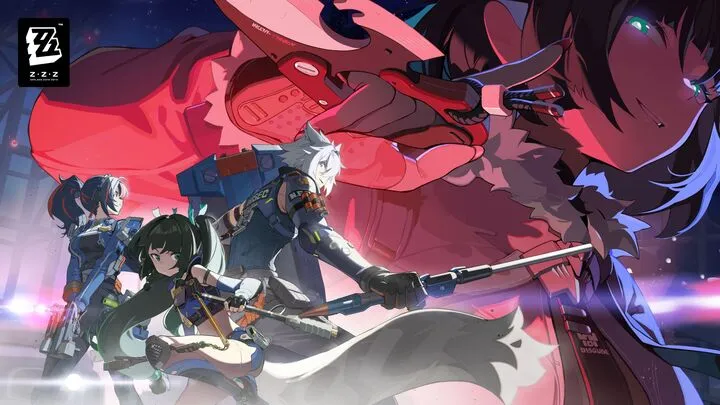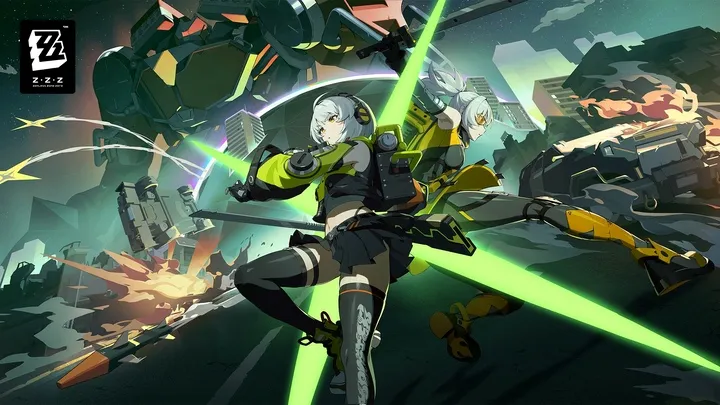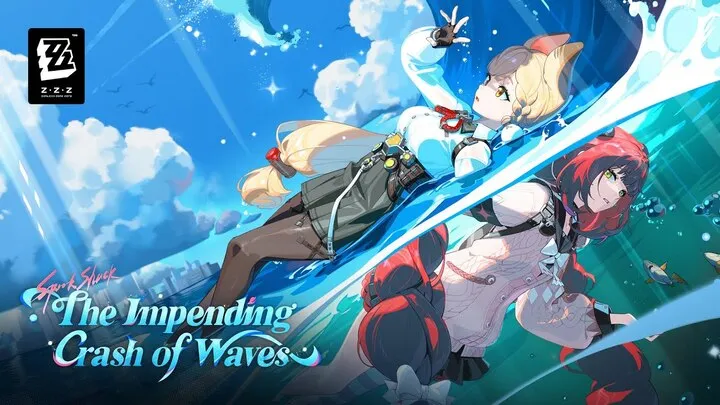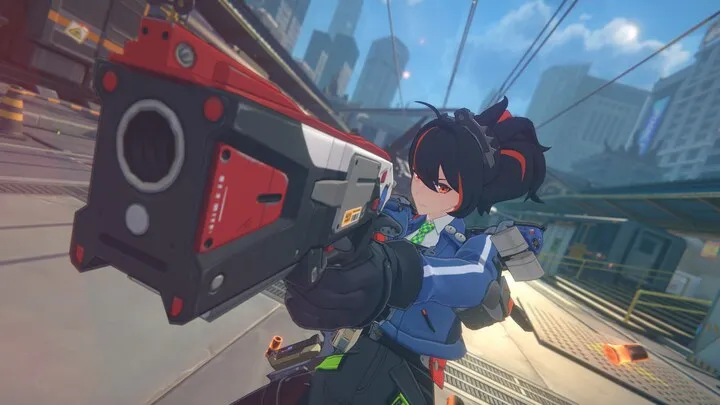Zenless Zone Zero is more than just an action RPG with stylish combat and futuristic aesthetics—it is a game defined by its mysterious entities known as Hollows. These chaotic dimensions are not only central to the story but also act as the foundation of the gameplay, shaping how players interact with the world, enemies, and factions. To truly appreciate the depth of Zenless Zone Zero, one must dive into the intricate evolution of Hollows, how they influence every aspect of the game, and the way they redefine the boundaries between narrative and mechanics.

The Origins of the Hollows
The Hollows are introduced as anomalies that break the laws of physics and create unstable zones filled with danger and opportunity. In the lore, Hollows appeared after catastrophic events that fragmented reality. These phenomena forced humanity to adapt by creating organizations to explore, regulate, and exploit them. The origins serve as the narrative backbone, framing Hollows as both a curse and a resource.
Hollows emerged suddenly, and their appearance was met with confusion and fear. Entire districts disappeared into these anomalies, and survivors spoke of surreal distortions of time and space. Scientists studied them to little avail, and eventually, corporations and governments took control of Hollow exploration. This history provides the context for why New Eridu, the last city, is so dependent on them.
The First Recorded Hollows
The earliest Hollows were devastating. They appeared unpredictably, swallowing neighborhoods and transforming them into labyrinths of shifting walls and hostile creatures. Early accounts describe survivors wandering endlessly, unable to escape until rescued. These stories highlight the sense of terror that still surrounds Hollows in the public imagination.
From Mystery to Exploitation
Over time, Hollows became more than disasters—they became opportunities. Researchers discovered rare resources inside Hollows that could fuel energy, technology, and medicine. This discovery transformed Hollows into economic engines, despite their dangers.
How Hollows Reshape the World of New Eridu
New Eridu, the last surviving metropolis, is heavily shaped by Hollows. This city thrives because of its ability to harness Hollow resources while simultaneously keeping their destructive potential at bay. The game’s environments show how Hollows distort the urban landscape—buildings half-consumed by anomalies, streets bent into impossible angles, and technology reconfigured into strange forms. These design choices reflect the coexistence of survival and exploitation.
The Hollow-Inspired Architecture of New Eridu
Many structures in New Eridu are built with Hollow influence in mind. Some buildings incorporate Hollow technology to stabilize their foundation, while others are partially reconstructed ruins reclaimed from collapsed zones. This fusion of ruin and renewal defines the city’s identity.

Citizens and Daily Life Under Hollow Threat
The citizens of New Eridu live with Hollows as both a source of livelihood and fear. Street markets often sell Hollow-derived items, while neighborhoods near unstable zones suffer from accidents. The tension between prosperity and danger creates a unique cultural texture.
Public Fear and Rumors
Despite regulation, Hollows remain unpredictable. People whisper about families disappearing overnight or entire blocks being swallowed without warning. This fear fuels myths and superstitions.
The Role of Proxies in Hollow Exploration
Proxies act as intermediaries who guide agents through Hollows, bridging the gap between human ambition and Hollow danger. Their existence is crucial because navigating Hollows without their expertise would be nearly impossible. Proxies represent the player’s role in the world—part strategist, part survivor.
Why Proxies Are Essential
Proxies act as coordinators, feeding critical intel to exploration teams. They monitor anomalies, analyze Hollow shifts, and ensure that agents maximize their efficiency. Without them, even elite fighters would struggle to survive.
The Symbolic Role of Proxies
Beyond mechanics, Proxies symbolize the human desire to control chaos. They represent adaptability—turning something dangerous into something usable.
A Player’s Identification with Proxies
The choice to cast the player as a Proxy is clever design. It creates immersion by aligning narrative logic with gameplay responsibility, reinforcing that players are not just combatants but decision-makers.
Hollows as a Gameplay Mechanic
Hollows are more than lore—they are a central gameplay mechanic. Every dungeon-like mission is essentially a dive into a Hollow, structured with roguelike elements and randomized layouts. This unpredictability mirrors the lore, reinforcing that Hollows cannot be fully controlled.
Roguelike Structure in Hollow Dives
Each Hollow dive offers randomized rooms, enemy placements, and item drops. This structure ensures variety and challenges players to adapt constantly.
Environmental Hazards and Anomalies
Inside Hollows, players encounter shifting floors, collapsing walls, or zones of temporal distortion. These hazards are not just obstacles but storytelling tools that emphasize instability.
List: Types of Hollow Anomalies
- Spatial distortions: sudden warps between rooms
- Temporal glitches: enemies frozen or sped up
- Resource fields: high-risk zones with rare loot
Faction Rivalries and Hollow Economics

Hollows drive the economy of New Eridu, fueling conflicts between factions. Corporations, gangs, and governments all want a share of Hollow resources, leading to tense rivalries.
Key Factions Competing Over Hollows
- Corporate syndicates who harvest resources
- Street gangs who exploit Hollows illegally
- Government authorities balancing order and profit
Economic Systems Built on Hollows
Hollow-derived materials form the backbone of trade. From energy grids to consumer goods, every layer of New Eridu depends on Hollow exploitation.
Black Market Trade
Illegal Hollow exploration thrives. Smugglers profit from unregulated runs, bringing in resources too rare for official distribution.
Psychological Impact of Hollows on Humanity
Beyond material gain, Hollows also affect people psychologically. Exposure to them can alter perception, memory, and even identity. Characters often show trauma, obsession, or corruption linked to prolonged Hollow interaction.
Hollow Sickness and Trauma
Extended time inside Hollows can lead to mental breakdowns, hallucinations, or physical symptoms. These effects show how deeply the anomalies unsettle human biology.
Case Studies in Character Narratives
Several characters in Zenless Zone Zero embody Hollow trauma. Their stories emphasize the costs of survival and the fragility of human resilience.
Hollows as a Narrative Symbol
On a symbolic level, Hollows represent chaos, greed, and resilience. They are metaphors for the unknown forces that societies exploit at their own risk.
Hollows as a Metaphor for Exploitation
Just as corporations exploit Hollows for resources, societies exploit nature, risking long-term consequences for short-term gain.
Hollows as Chaos and Renewal
They also represent renewal—destroying spaces but creating opportunities. This duality mirrors cycles of destruction and growth in human history.
Artistic and Audio Design of Hollows
The design of Hollows is one of the game’s strongest artistic achievements. Visually, they are a blend of surreal geometry, neon distortions, and collapsing architecture. The audio design complements this with eerie echoes, distorted soundscapes, and sudden silences that create tension.
Visual Palette of the Hollows
Colors in Hollows shift between neon vibrancy and dark voids, contrasting life and decay. Geometry is designed to feel both alien and familiar.
Soundscapes of Distortion
Audio cues—like glitching static or echoing steps—immerse players, making Hollows feel alive. Silence often heightens suspense before encounters.
Hollows and Replayability

Replayability in Zenless Zone Zero is largely tied to Hollows. Because they constantly change, players are motivated to return again and again.
Procedural Design and Longevity
The procedural nature ensures endless variation, giving players incentive to experiment with builds, strategies, and team compositions.
Social and Competitive Replay Value
Players compare Hollow runs, share strategies, and compete over efficiency. This community-driven layer extends Hollow relevance beyond solo play.
The Future of Hollows in Zenless Zone Zero
Looking ahead, Hollows are poised to expand with updates, story arcs, and new mechanics. Future content may explore deeper layers of Hollow lore, reveal previously unknown factions, or introduce more dangerous anomalies.
Potential Expansions of Hollow Lore
New storylines may dive into the origins of Hollows or the possibility of their evolution into new forms.
Mechanical Innovations in Future Updates
Developers may add Hollow mutations, player-driven map alterations, or faction-based Hollow wars.
Conclusion
Hollows in Zenless Zone Zero are not just a backdrop—they are the foundation of everything the game offers, from narrative weight to gameplay innovation. They reshape the city of New Eridu, define the role of Proxies, fuel faction rivalries, and challenge the player’s endurance. Through symbolic storytelling, immersive design, and systemic replayability, Hollows elevate Zenless Zone Zero into something more than an action RPG. They make it a story about survival, ambition, and humanity’s complex relationship with the unknown.

















